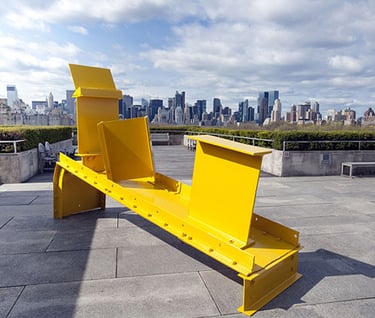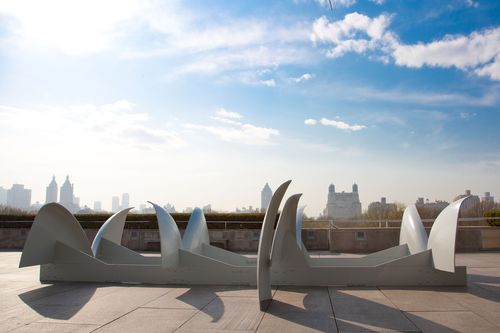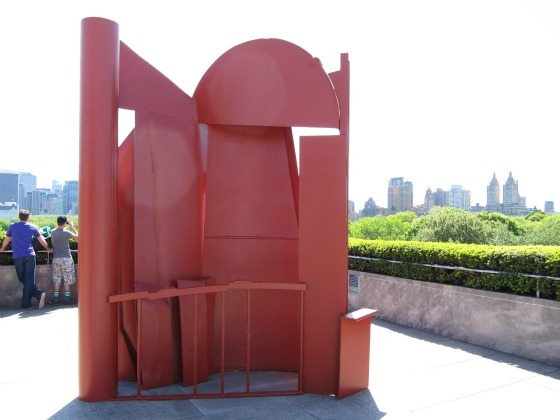Anthony Caro on the Roof
Iris Yirei Hu
7/14/2011


Picture a modernist giant dominating the rooftop of the Institution of all institutions, the Metropolitan Museum of Art. Enter British sculptor Anthony Caro, on the roof of the Met.
The exhibition’s title, Anthony Caro on the Roof, is concisely descriptive, establishing the precedent of the show: a key figure in modern art marking his return to the scene. It also determines the overbearing sense of autonomy evident in his sculptures. While the exhibition claims to reveal the “principle aspects” of Caro’s career, namely, his interest in the “dialogue between sculpture and architecture,” it completely refutes this notion. Plop art adequately describes Caro’s most recent exhibition at the Met.
The five works on display span across the last sixty years. The brightest of the works, Midday (1960), looks like a playful Lego-constructed yellow creature that would be better suited in a children’s playground. Odalisque (1984) is a stark contrast; its hemispherical shapes attached to chain links and a steel boat deck is oppressively macho. An interesting duality of monumentality and delicacy is marked by the petal-like structures of After Summer (1968) that march along two thin metal slabs. Blazon (1987-90) is a red and tall pastiche of architectural elements—the column, steel rod gate, archway, and steel sheets. The last, End Up (2010), made of rusted steel and cast iron, is a compressed not-sure-what-you-would-call-it enigma that seems to have risen from the past (or a shipwreck).
The show provides a very concise retrospective of his long and influential career. Each work is very much aligned within the “confines” of sculpture. They are autonomous and self-conscious objects that bear no relationship to the architecture of the rooftop. Greenberg and Fried would so approve, and in fact, they did. The works are “plopped” in space, standing alone and reemphasizing the Greenbergian trope of autonomous art (Caro credits Greenberg as one who made him “rethink” sculpture, and not to mention that they were colleagues) that contests the present-day pursuit of site-specificity. They are to be appreciated as objects, and would function just as well if placed in a park, I would contend, as again, the environmental context has nothing to do with the work. How do the sculptures alter the rooftop space, or do they not? The sculptures are seemingly only beginning to compete with the romantic New York City skyline, crying for attention, but not getting enough. And I think the show would have been much more interesting had the competition between the sculptures and the skyline been realized to fruition.
Having a show on the roof of any building, especially the Met’s, calls for excitement and intrigue. I think this show, though arguably insightful and concisely comprehensive, fell short in igniting that enthusiasm. Where is the supposed dialogue between sculpture and architecture? Plopping large-scale works on rooftops of institutions does not immediately establish “dialogue;” in fact, there is a huge gap between object and the space in which it is situated because of the object’s autonomy and self-referential nature. I do think one thing is clear though: having Caro’s work on the roof of the Met seems to symbolize his historic influence in modern art; it is as if the entire building of the Met is a metaphoric pedestal for Caro’s legacy.




